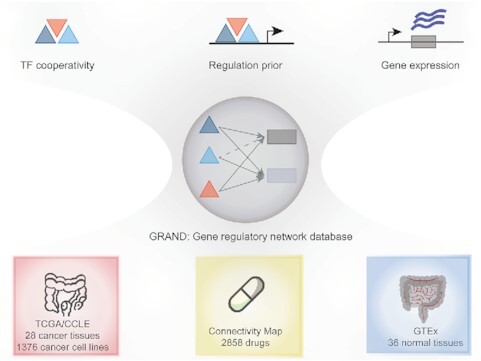Marouen Ben Guebila:
ORCID: https://orcid.org/0000-0001-5934-966X
Camila M Lopes-Ramos
Deborah Weighill:
ORCID: https://orcid.org/0000-0003-4979-5871
Abhijeet Rajendra Sonawane
Rebekka Burkholz
Behrouz Shamsaei
John Platig
Kimberly Glass
Marieke L Kuijjer:
ORCID: https://orcid.org/0000-0001-6280-3130
John Quackenbush:
ORCID: https://orcid.org/0000-0002-2702-5879
Journal ID (nlm-ta): Nucleic Acids Res
Journal ID (iso-abbrev): Nucleic Acids Res
Journal ID (publisher-id): nar
Title:
Nucleic Acids Research
Publisher:
Oxford University Press
ISSN
(Print):
0305-1048
ISSN
(Electronic):
1362-4962
Publication date Collection: 07
January
2022
Publication date
(Electronic):
11
September
2021
Publication date PMC-release: 11
September
2021
Volume: 50
Issue: D1
Pages: D610-D621
Affiliations
Department of Biostatistics, Harvard School of Public Health , Boston, MA, USA
Department of Biostatistics, Harvard School of Public Health , Boston, MA, USA
Department of Biostatistics, Harvard School of Public Health , Boston, MA, USA
Center for Interdisciplinary Cardiovascular Sciences, Cardiovascular Medicine, Brigham
and Women's Hospital, Harvard Medical School , Boston, MA02115, USA
Department of Biostatistics, Harvard School of Public Health , Boston, MA, USA
Division of Biostatistics and Bioinformatics, Department of Environmental and Public
Health Sciences, University of Cincinnati College of Medicine , Cincinnati, OH, USA
Channing Division of Network Medicine, Department of Medicine, Harvard Medical School
and Brigham and Women’s Hospital , Boston, MA, USA
Department of Biostatistics, Harvard School of Public Health , Boston, MA, USA
Channing Division of Network Medicine, Department of Medicine, Harvard Medical School
and Brigham and Women’s Hospital , Boston, MA, USA
Center for Molecular Medicine Norway, Faculty of Medicine, University of Oslo , Oslo, Norway
Leiden University Medical Center , Leiden, The Netherlands
Department of Biostatistics, Harvard School of Public Health , Boston, MA, USA
Channing Division of Network Medicine, Department of Medicine, Harvard Medical School
and Brigham and Women’s Hospital , Boston, MA, USA
Author notes
The authors wish it to be known that, in their opinion, the first two authors should
be regarded as Joint First Authors.
Author information
Article
Publisher ID:
gkab778
DOI: 10.1093/nar/gkab778
PMC ID: 8728257
PubMed ID: 34508353
SO-VID: 6a94a363-d63e-4944-956e-ebac1c3ebe7f
Copyright © © The Author(s) 2021. Published by Oxford University Press on behalf of Nucleic Acids
Research.
License:
This is an Open Access article distributed under the terms of the Creative Commons
Attribution License (
https://creativecommons.org/licenses/by/4.0/), which permits unrestricted reuse, distribution, and reproduction in any medium,
provided the original work is properly cited.
Funded by:
Norwegian Research Council, DOI 10.13039/501100005416;
Funded by:
Helse Sør-Øst;
Funded by:
University of Oslo, DOI 10.13039/501100005366;
Funded by:
National Institutes of Health, DOI 10.13039/100000002;
Award ID: K25 HL133599
Funded by:
National Heart, Lung, and Blood Institute, DOI 10.13039/100000050;
Award ID: K25 HL140186
Funded by:
National Cancer Institute, DOI 10.13039/100000054;
Funded by:
National Institutes of Health, DOI 10.13039/100000002;
Award ID: R35 CA220523
Award ID: U24 CA231846
Award ID: 1T32CA236764


